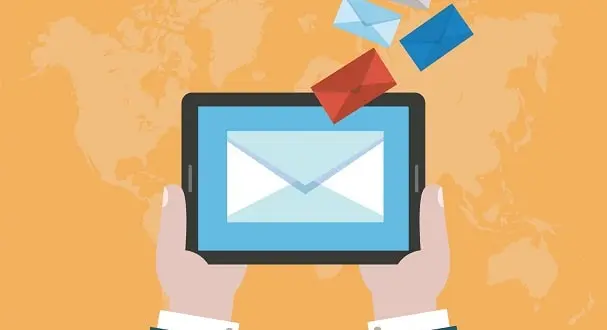Email (short for “electronic mail”) is a method of exchanging digital messages between people using the internet. It is one of the oldest and easiest forms of digital communication and is still widely used today for personal and business communication. An email message typically consists of a subject line, the message body, and any attachments or files that are included. Emails are sent and received using email software or an email client, and are typically stored on a server, either on-premises or in the cloud.

Email Advantages
Email has several advantages over other forms of communication, such as mail and telephone:
1. Speed: Emails can be sent and received almost instantly, regardless of the location of the sender and receiver.
2. Convenience: Emails can be sent and received from any device with internet access, which makes it easy to communicate from anywhere at any time.
3. Cost-effective: Sending emails is generally cheaper than mailing physical letters or making phone calls, especially for long-distance communication.
4. Document retention: Emails can be saved and stored for future reference, which is useful for keeping records of important conversations.
5. Efficiency: Email allows for easy organization and prioritization of messages, and can be used to send large amounts of information quickly.
6. Collaboration: Email allows for easy communication and collaboration between multiple parties, which is useful for group projects and teamwork.
7. Easy to track: Email provides a good way to track when a mail was sent and received, and whether it has been read or not.
8. Multipurpose: Emails can be used for various purposes, from sending personal messages to sending official documents, invoices, and promotional campaigns.
Email Disadvantages
While email is a widely used and efficient form of communication, it also has some disadvantages:
1. Spam and Junk mail: A large amount of unwanted emails, also known as spam or junk mail, can clutter inboxes and make it difficult to find important messages.
2. Security: Email is vulnerable to hacking and malware attacks, which can compromise the security of sensitive information.
3. Miscommunication: The lack of nonverbal cues, such as tone of voice and facial expressions, can lead to miscommunication and misinterpretation of messages.
4. Distraction: Constantly checking and responding to emails can be a major distraction and can lead to decreased productivity.
5. Overload: People can be overwhelmed by the sheer volume of emails they receive, making it difficult to manage and respond to them in a timely manner.
6. Lack of Privacy: Emails can be easily forwarded, copied or shared with unintended recipients, compromising the privacy of the sender or the receiver.
7. Technical issues: Email service providers can experience technical difficulties, resulting in delays or lost messages.
8. Lack of Emotion: Email can lack the personal touch and emotions that can be conveyed through face-to-face communication or even phone calls.
Email Frequently Asked Questions
Q. How do I set up an email account?
Ans: Depending on the email service provider, the process of setting up an email account may vary. However, generally, you will need to provide personal information, create a username and password, and select a security question for account recovery.
Q. How do I send an email?
Ans: The process of sending an email is similar across most email clients. To send an email, you will need to open your email program, compose a new message, enter the recipient’s email address, add a subject and message, and click the “send” button.
Q. How do I check my email?
Ans: To check your email, you will need to open your email program or log in to your email account on the web. Once logged in, you will be able to view your inbox and any new messages that have been received.
Q. How do I attach a file to an email?
Ans: To attach a file to an email, you will need to open a new message, click on the “attach” or “paperclip” icon, and select the file you wish to attach from your computer. Once the file is attached, you can then send the email as normal.
Q. How do I organize my emails?
Ans: Most email clients have built-in tools to help you organize your emails, such as folders, labels, and filters. You can use these tools to sort and categorize your emails, making it easier to find specific messages.
Q. How do I change my password?
Ans: The process of changing your password will vary depending on the email service provider. Generally, you will need to log in to your account, navigate to the settings or account management page, and follow the prompts to change your password.
Q. How do I recover a deleted email?
Ans: Depending on the email service provider, it may be possible to recover a deleted email. Some email clients have a “trash” or “deleted items” folder where emails are temporarily stored before they are permanently deleted. In addition, some services also have a way to recover deleted email by restoring a previous version of the mailbox.
Santosh Kumar is a Professional SEO and Blogger, With the help of this blog he is trying to share top 10 lists, facts, entertainment news from India and all around the world.
